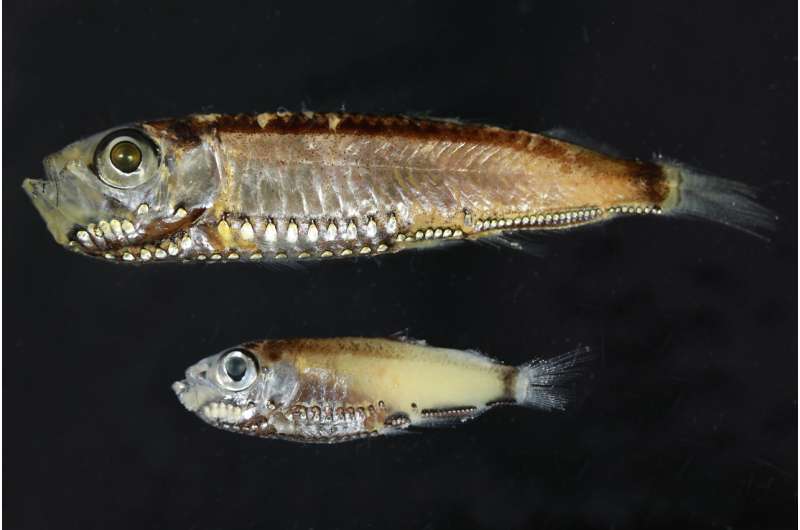Twilight trick: A new type of cell has been found in the eye of a deep-sea fish

A new type of cell has been found in the eye of a deep-sea fish, and scientists say the discovery opens a new world of understanding about vision in a variety of light conditions.
University of Queensland scientists found the new cell type in the deep-sea pearlside fish (Maurolicus spp.), which have an unusual visual system adapted for twilight conditions.
Dr Fanny de Busserolles at UQ's Queensland Brain Institute said the retina of most vertebrate animals - including humans - contained two photoreceptor types: rods for vision in dim light, and cones for daytime vision. Each had different light-sensitive proteins.
"Deep-sea fish, which live at ocean depths below 200m, are generally only active in the dark, so most species have lost all their cones in favour of light-sensitive rods," Dr de Busserolles said.
Pearlsides differed in that they were mostly active at dusk and dawn, close to the water's surface where light levels are intermediate.
"Previously it was thought that pearlsides had retinas composed entirely of rods, but our new study has found this isn't the case," Dr de Busserolles said.
"Humans use their cones during the day our rods at night, but during twilight, although not ideal, we use a combination of both.
"Pearlsides, being active mainly during twilight, have developed a completely different solution.
"Instead of using a combination of rods and cones, they combine aspects of both cells into a single and more efficient photoreceptor type."
The researchers found that the cells - which they have termed "rod-like cones" for their shapes under the microscope - were tuned perfectly to the pearlsides' specific light conditions.
Research leader Professor Justin Marshall said the study was significant.
"It improves understanding of how different animals see the world and how vision might have helped them to conquer even the most extreme environments, including the deep sea," Professor Marshall said.
"Humans love to classify everything into being either black or white.
"However our study shows the truth might be very different from previous theories.
"More comprehensive studies, and caution, are needed when categorising photoreceptor cells into cones and rods."
The study is published in Science Advances.
More information: F. de Busserolles el al., "Pushing the limits of photoreception in twilight conditions: The rod-like cone retina of the deep-sea pearlsides," Science Advances (2017). advances.sciencemag.org/content/3/11/eaao4709 , DOI: 10.1126/sciadv.aao4709
Journal information: Science Advances
Provided by University of Queensland




















